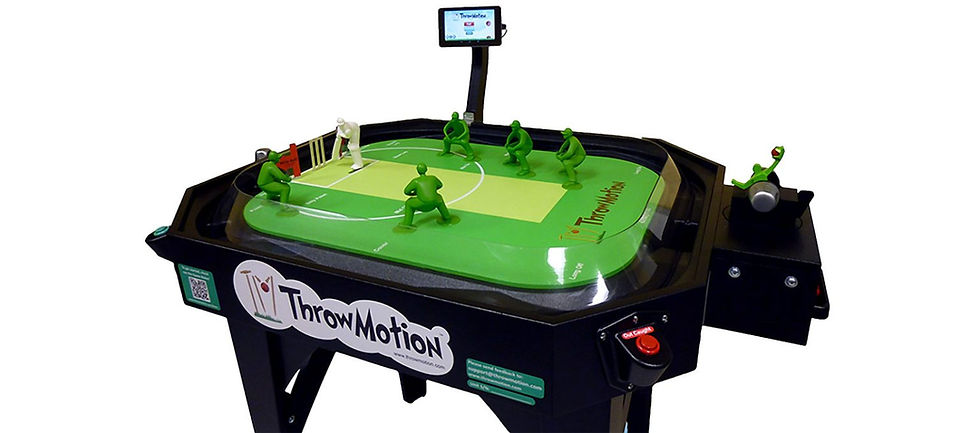
Prototypes Played a Crucial Role in Development of Tabletop Cricket Game
Before a full-scale model could be manufactured, prototyping focused on smaller, more manageable designs allowing for greater creativity while keeping costs down.
Edited by EE Staff
Games
Oct 30, 2025
TG&A (Tom Grimm & Associates, Inc.) is an international product development company that performs everything from concept exploration and creation to engineering development and manufacturing. The company’s projects are always managed collaboratively and with budgets and time-to-market in mind.
Before producing a 56-inch x 40-inch office version of CricketLive, the game was first developed in a reduced size. TG&A worked closely with ThrowMotion in the early design, providing the Batsman mechanism and one of several bowler mechanisms as well as the basic configuration of the field and its ball-return geometry. Once design features were determined, the final construction was scaled for use in arcades.
Cricket is a bat-and-ball game where two teams of eleven players each alternate between batting and fielding, similar to baseball. There are a number of differences such as the shape of bat, the bowling action, and the shape of the playing field, but ball dynamics (speeds) are similar. The batting team scores runs by hitting the ball and running between three-stump wickets or hitting boundaries. The team in the field tries to either bowl out the batsmen, catch their hits, or run them out.
In the tabletop cricket game, a real ball is bowled by one player, the bowler, and a batsman, controlled by his opponent, tries to hit the ball. The player is able to swing the bat and swivel the player in multiple directions to try to hit the ball. Sensors and a mounted tablet app display, tracks and shows the scores in real time.
The CAD images below illustrate the development of the first prototype of the movement mechanisms for the batsman. The basic mechanisms have changed only slightly since the prototype was built.

Alternative mechanisms for the bowler included a user-guided mechanical version and a fully electronically controlled mechanical bowler. Both were developed through the prototype phase. Ultimately though, the cost of manufacturing won out and drove the design toward the simpler user-guided, spring-loaded mechanism.

Multiple iterations of the table design were also created and modeled from the original arcade-driven, larger size which enabled multiple players to participate, to the final smaller home/office appropriate size.

Although TG&A was not involved with the final product shown at the top of this article, many of the prototyped mechanisms remained. Watch out for a home version of the cricket game coming to market in 2026.
For more information:
